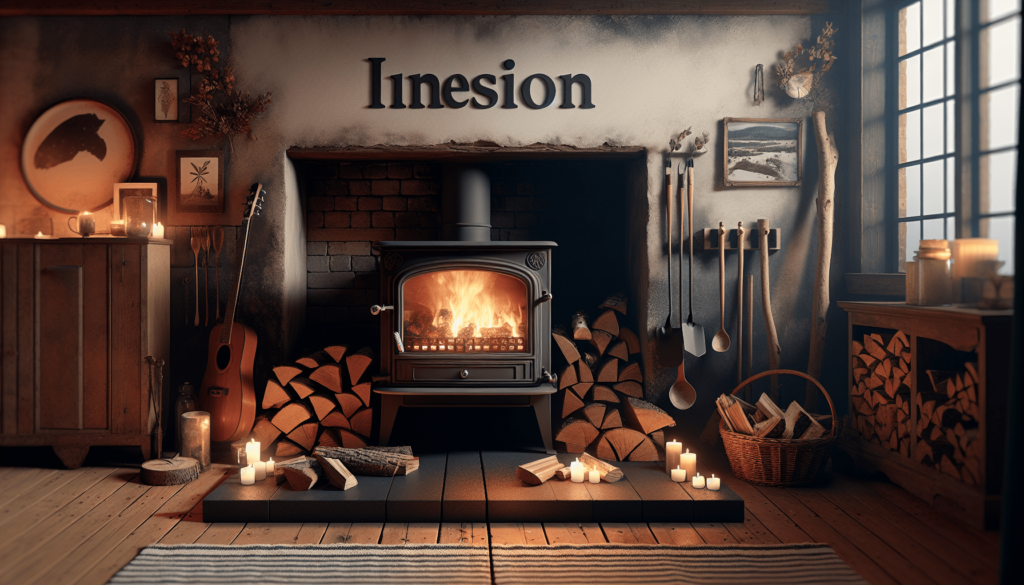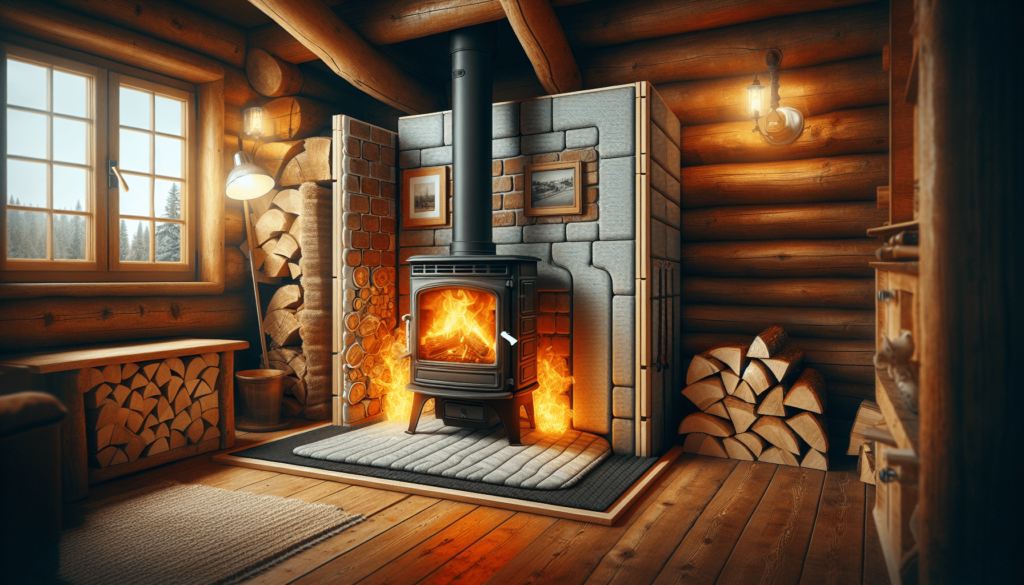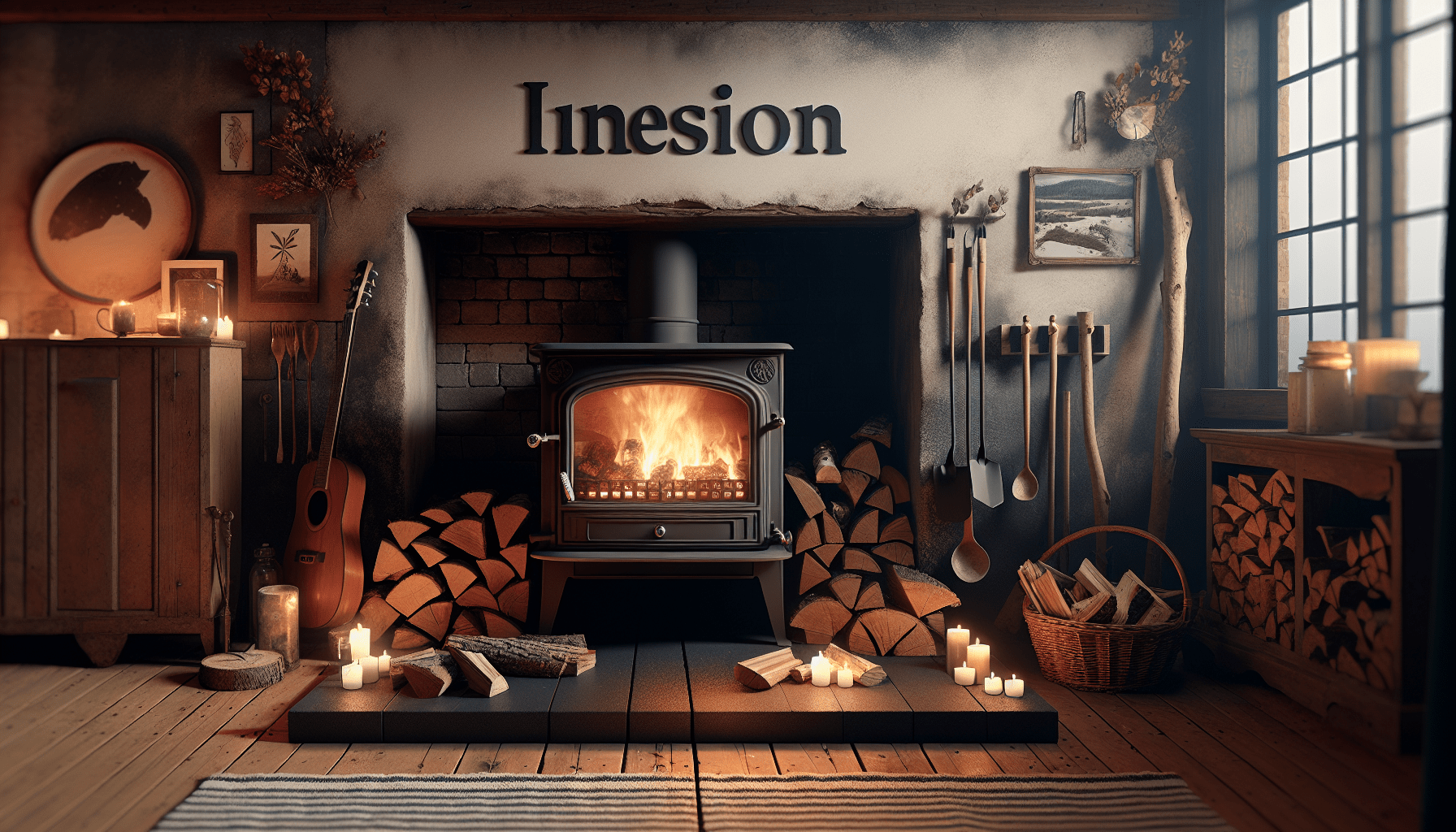When I first decided to install a wood burning stove in my living room, I never realized how crucial the right backing would be until I started researching and speaking to experts. The wall behind the stove needs to be prepared meticulously to ensure safety and efficiency. Fire-resistant materials like brick, stone, or specially designed heat shields are non-negotiable to prevent heat damage and potential fire hazards. Moreover, installing adequate insulation and allowing proper clearance are essential steps to not only safeguard your home but to also maximize the stove’s heating performance. The peace of mind knowing my setup is both safe and efficient has made the cozy warmth from my wood burning stove even more enjoyable. Have you ever wondered what you need behind a wood-burning stove? I certainly did before I embarked on my little home improvement journey. Let me take you through the nitty-gritty details of it all. Grab a cup of coffee, sit back, and let’s dive into the wonderful world of wood-burning stoves together.
The Magic and Practicality of Wood-Burning Stoves
Before I get to the specifics of what’s needed behind the stove, let’s talk about the sheer magic of a wood-burning stove. You see, wood-burning stoves aren’t just a source of heat; they’re a cozy gathering spot where you can curl up with a good book or catch up with friends and family. But beyond the warm fuzzies (literally and figuratively), there are practicalities to consider.
Choosing the Right Location
First things first: where will this beauty sit? Trust me, I spent hours debating the perfect spot. The stove’s location will dictate a lot about what you need behind it. For optimal heat dispersion and safety, the stove should ideally be in the heart of your home. But ease of access to wood and proximity to an existing chimney (if you have one) are also key factors.
Clearance, Clearance, and More Clearance
Okay, once you’ve got the perfect spot picked out, it’s time to think about clearance. This is a fancy way of saying: how much space should we leave between the stove and the walls or other combustibles? The general rule is 36 inches from any combustibles, but check your stove’s manual for the manufacturer’s recommendations.
Material Matters
What you put behind your stove isn’t just about aesthetics—although, believe me, aesthetics matter. Fire-resistant materials are a must. Let me break down a few options for you.
Brick and Stone
Brick and stone are perhaps the most traditional choices. They scream “rustic charm” and provide excellent thermal mass, which helps to even out temperature fluctuations. But they aren’t just pretty faces; they’re incredibly durable too.
Pros:
- High heat resistance
- Aesthetically pleasing
- Durable
Cons:
- Can be costly
- Requires maintenance (mortar deterioration over time)
Ceramic or Porcelain Tiles
These are the fancy cousins of brick and stone. Tiles offer a modern look and come in a slew of styles and colors. Best of all, they’re relatively easy to clean.
Pros:
- Heat-resistant
- Variety of designs
- Easy to clean
Cons:
- Can be slippery (not that you should be walking on your walls… I hope)
- Installation can be tricky
Metal Sheets
If you’re into an industrial look, metal sheets might be up your alley. They’re super-efficient at reflecting heat back into the room.
Pros:
- Reflective surface
- Easy to install
- Durable
Cons:
- Can be prone to rust if not properly treated
- May dent easily
Fire Protection Measures
Alright, you’ve picked your materials, now let’s talk fire safety. Because let’s be honest, the last thing you want is to unintentionally star in a fire safety PSA.
Heat Shields
Think of heat shields as the unsung heroes. These are installed behind the stove to protect the wall from becoming an unexpected kindling.
Pros:
- Provides added protection
- Can be used with a variety of materials
Cons:
- Adds an extra layer of installation
- Not the prettiest feature
Insulating Boards
Insulating boards are another great option, especially if you’re looking to mount your stove closer to the wall. These fire-resistant panels can reduce necessary clearances and provide a neat finish.
Pros:
- Reduces wall clearance
- Provides excellent fire resistance
Cons:
- Additional cost
- Installation can be a bit more involved
The Floor Situation
Just when you think you’ve thought of everything—surprise! Don’t neglect the area beneath your stove. Non-combustible hearth pads or floor protectors are essential.
Hearth Pads
Hearth pads not only protect your floor from errant embers but also add another layer of style. These can be made from a variety of materials like stone, tile, or metal.
Pros:
- Adds an extra safety measure
- Various design options
Cons:
- Can be expensive
- Needs regular cleaning
The Importance of Ventilation
I can’t stress enough the importance of proper ventilation. Poor ventilation can make your home feel like an episode of “Survivor,” with everyone gasping for fresh air.
Chimneys and Flue Pipes
If your house didn’t come with a chimney (bummer, I know), you’d need to install a flue pipe. There are two main types: masonry chimneys and prefabricated (pre-fab) metal chimneys.
Masonry Chimneys
These are your traditional brick-and-mortar kind, and they’re pretty reliable.
Pros:
- Durable
- Enhances home value
Cons:
- Expensive
- Requires regular maintenance
Prefabricated Metal Chimneys
These are the IKEA version of chimneys—affordable and quicker to set up but might not last as long.
Pros:
- Cost-effective
- Easy to install
Cons:
- Wear out faster
- Can be less aesthetically pleasing
Smoke Detectors and Carbon Monoxide Alarms
I know, I know. You’re an adult and don’t need reminders to be safe. But hey, let’s just be extra sure. Smoke detectors and carbon monoxide alarms are non-negotiable for peace of mind.
Pros:
- Early detection of fire or harmful gases
- Relatively inexpensive
Cons:
- Needs battery changes
- Occasional false alarms
The Style Factor
Finally, we come to the fun part: making it look amazing.
Paint and Finishes
If you went for something like bricks, you could leave it bare for that rustic charm or paint it to match your interior décor.
Mantels and Shelves
Wooden mantels can add a touch of elegance, but remember to keep the recommended clearance from the stove. Shelving above the mantle can provide space for knick-knacks and family photos.
Accessories
A stylish stove deserves stylish accessories. Consider adding log holders, fire pokers, and other practical yet appealing items.

Maintenance Tips
Last but not least, a few words of wisdom on maintenance. Regular cleaning of your stove and the area behind it will not only keep it looking sharp but also ensure its longevity.
Cleaning the Stove
A little elbow grease goes a long way. Regularly remove ash and clean the glass door for a clear view of those mesmerizing flames.
Checking for Damage
Inspect the wall behind the stove periodically for any signs of wear, tear, or damage. Cracks, rust, or discoloration should be tended to immediately.
Chimney Sweep
Make friends with your local chimney sweep. A yearly check-up and cleaning can prevent a ton of potential issues down the road.
Summing It Up
Alright, if you’ve stuck with me this far, you’re a trooper. And you’re now pretty much an expert on what you need behind a wood-burning stove. From choosing the right materials to installing heat shields and ensuring proper ventilation, there’s a lot to consider. But trust me, all the effort is worth it when you’re sitting by your wood-burning stove, toasty and snug.
So, when are you getting started on your wood-burning stove adventure?


